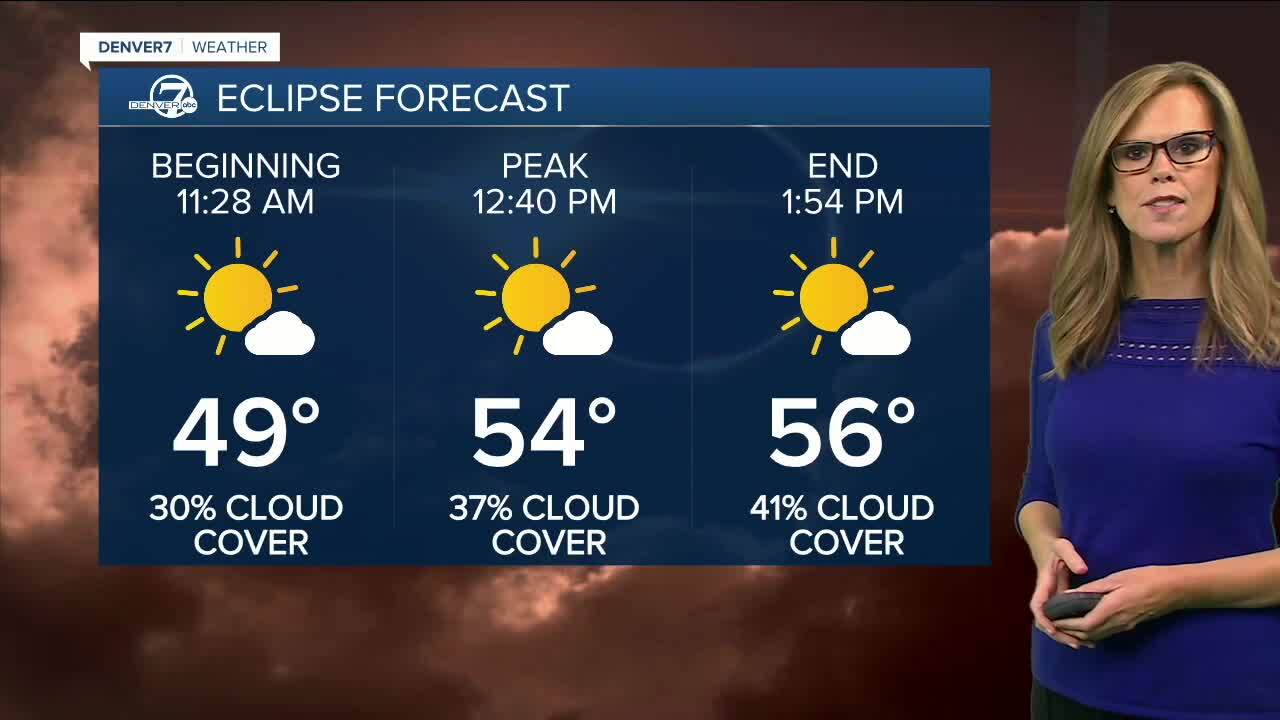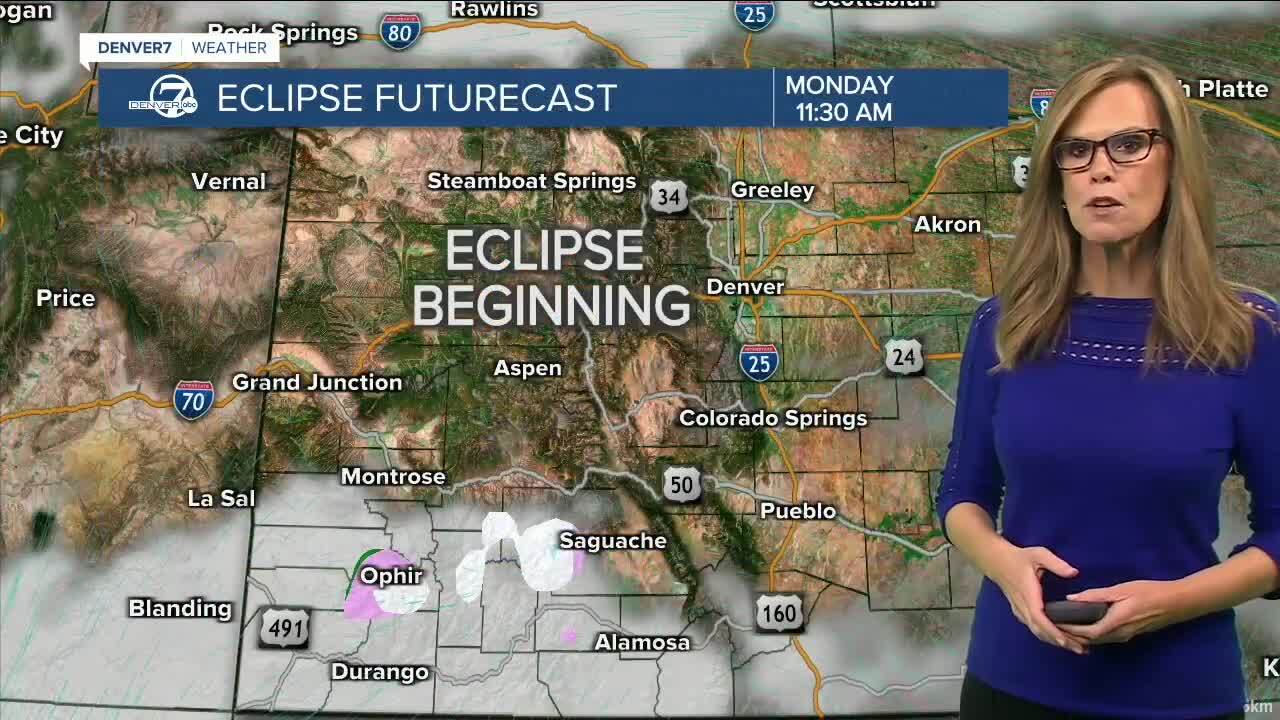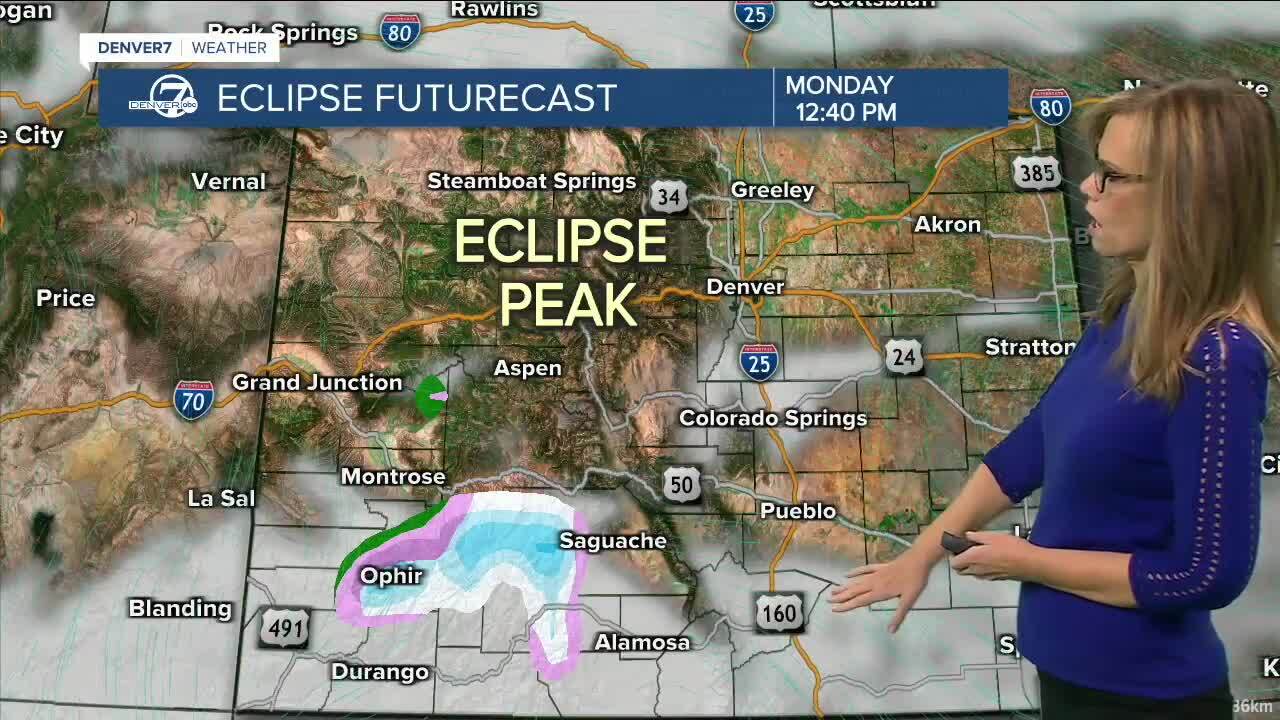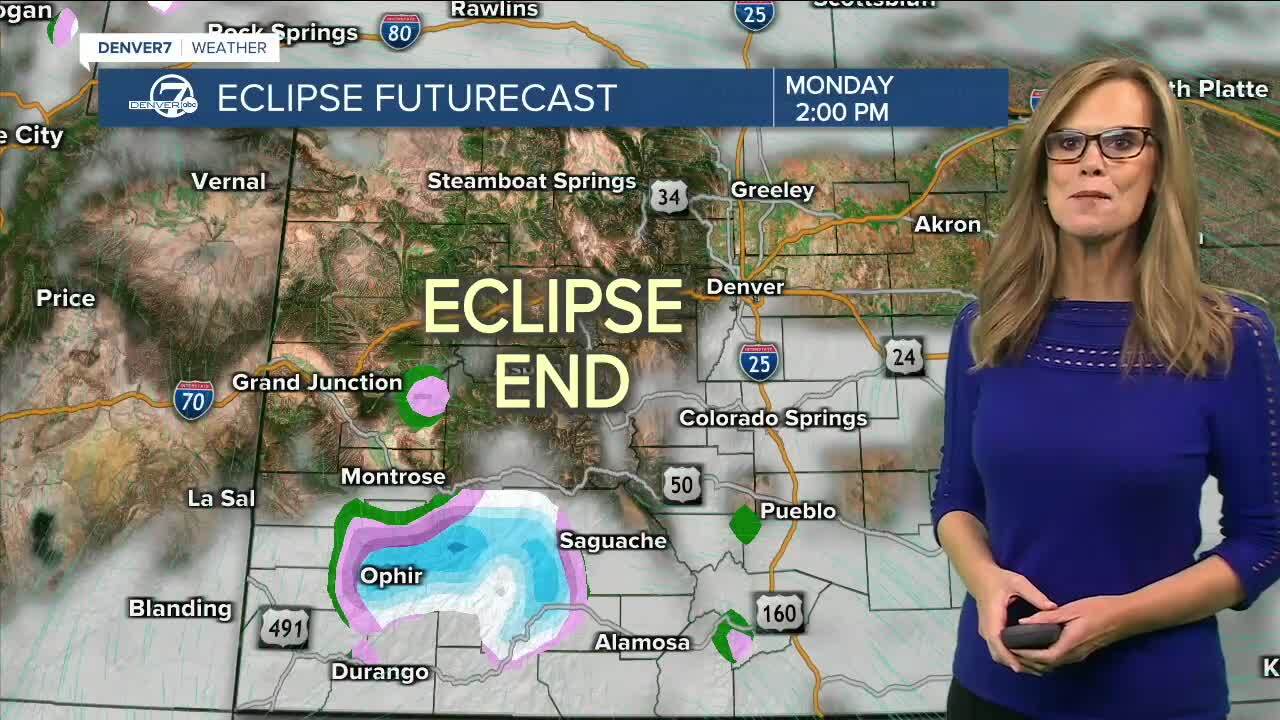DENVER — Eclipse day is finally upon us, and the forecast is taking shape here in Colorado for our partial solar eclipse.
We’ll reach a maximum totality of 65% in Denver, but the cloud forecast looks like it will allow for viewing of the special event. We’ll have lots of sunshine on Monday along the Front Range, with some light cloud cover moving in during the eclipse, which begins at 11:28 a.m. and ends at 1:54 p.m. Temps will be 49 degrees at the beginning of the eclipse and 56 degrees by its end.

Below is a breakdown of what the skies will look like, as of Sunday evening’s forecast. And here is everything else you need to know about viewing the eclipse in Colorado.
Eclipse beginning: 11:28 a.m.
We’ll have about 30% cloud cover in the Denver area at 11:28 Monday morning when the eclipse begins, according to Denver7 meteorologist Stacey Donaldson. It looks like it’ll be cloudier in far southern and southwest Colorado.
"Minimal sky cover should allow for good viewing conditions for the northeastern portion of Colorado at the onset of the event," according to the National Weather Service in Boulder.

Eclipse peak: 12:40 p.m.
Cloud cover increases to about 37% by eclipse peak at 12:40 Monday afternoon, with the Colorado Springs area seeing more cloud cover than the Denver metro.
"Low and mid level clouds will begin to move into the northeastern portion of Weld, Logan, and Sedgwick Counties as the event is wrapping up, so you should be able to get a good look at its peak time," the NWS said.

Eclipse end: 1:54 p.m.
Slightly more cloud cover is expected to move in over the I-25 corridor into the Front Range by the end of the eclipse – around 41%.

"Areas from Boulder County south and west into the mountains, and the Denver metro south to the Palmer Divide may have to battle with some pesky mid and high level clouds throughout the event," the NWS said. "But there should be plenty of opportunity throughout the 2 hour 26 min duration to sneak out on your lunch break to catch a glimpse!"
In the path of totality
The following comes from The Associated Press:
Clouds are forecast for much of the eclipse route through the U.S. with some possible patches of clear skies in some spots, according to the latest forecast from the National Weather Service.
Northern New England into Canada is still the best bet to witness the eclipse, when the moon blocks out the sun for a few minutes and day turns into night.
Texas is likely to have the heaviest cloud cover. More concerning, the weather service is forecasting severe weather — tornadoes and hail — about the time of the eclipse for parts of Texas, Oklahoma, Arkansas and Louisiana.
The forecast for the eclipse path has been fairly consistent for the past 10 days, said David Roth, a meteorologist with the weather service.
“Things aren't moving that fast,” he said Sunday.
The path of total darkness stretches from Mexico and Texas through Maine and parts of Canada.



